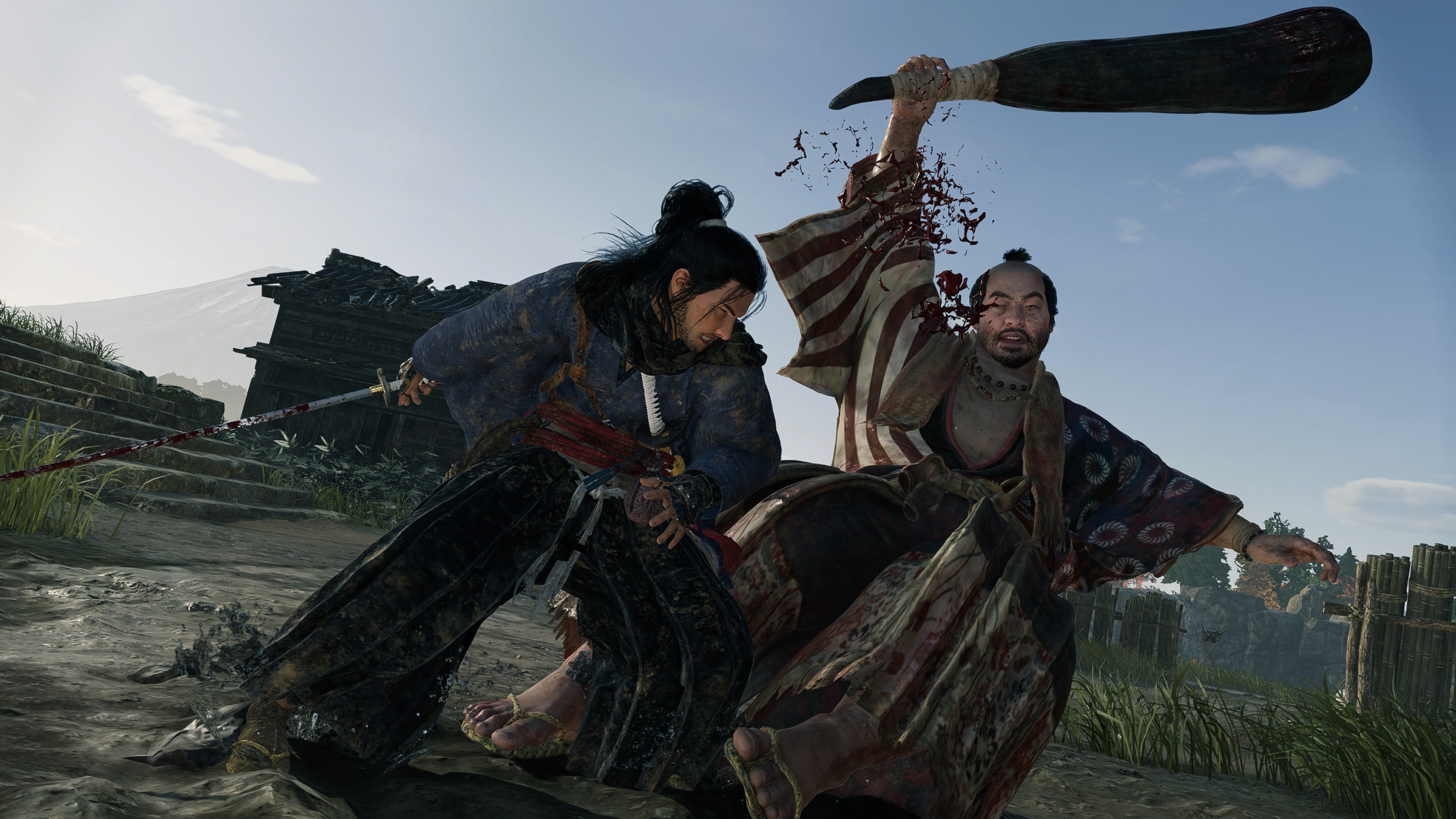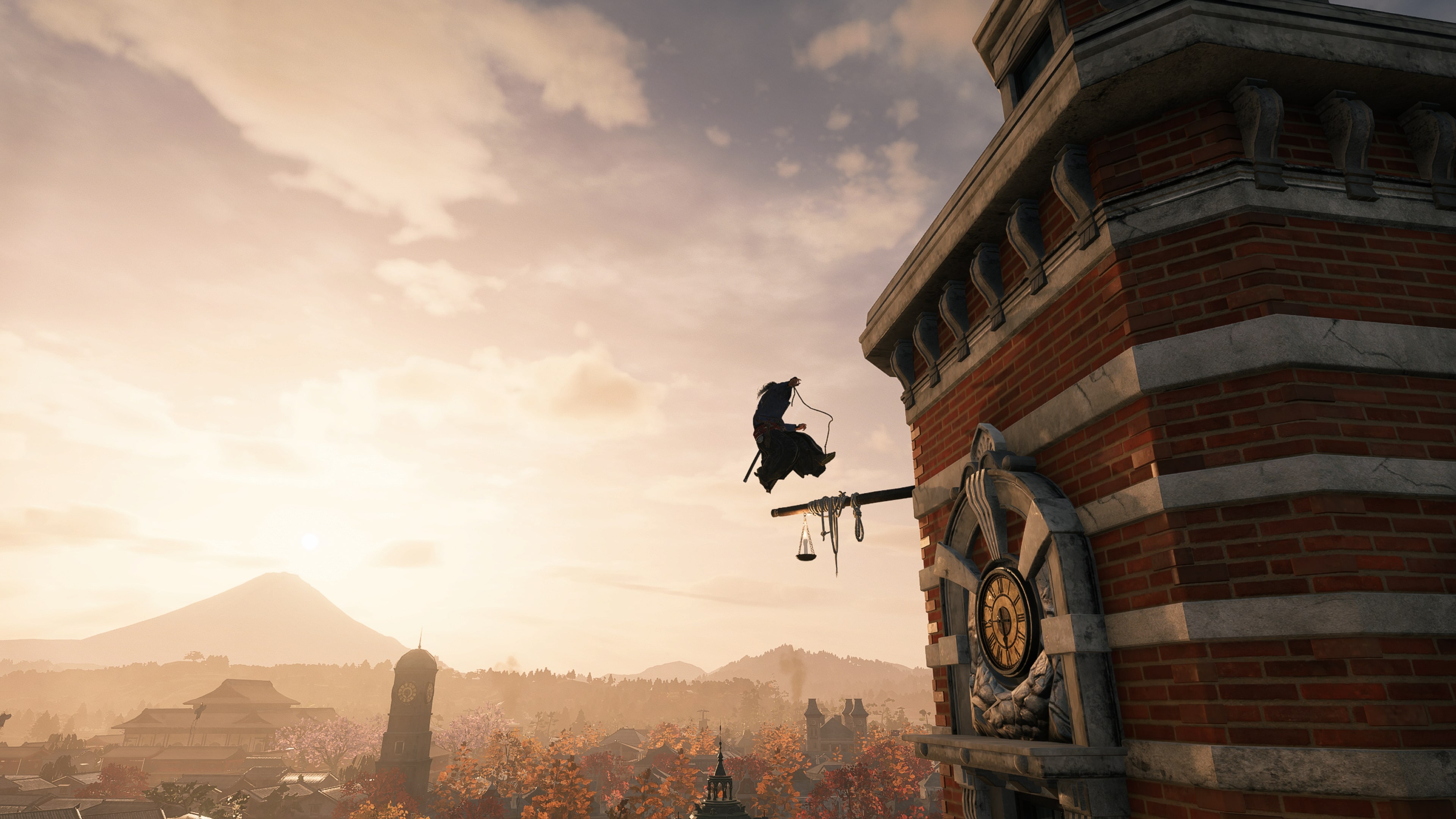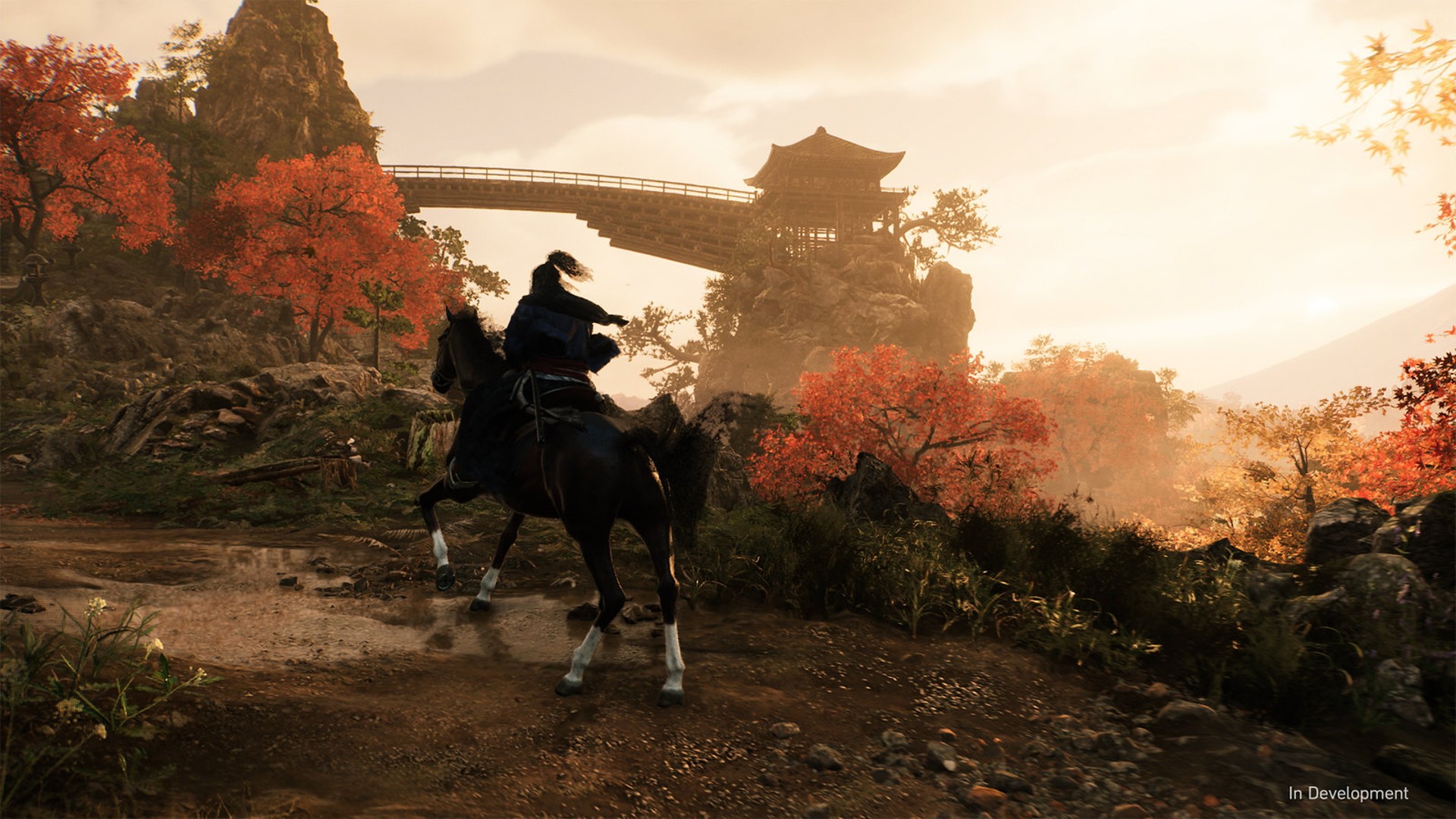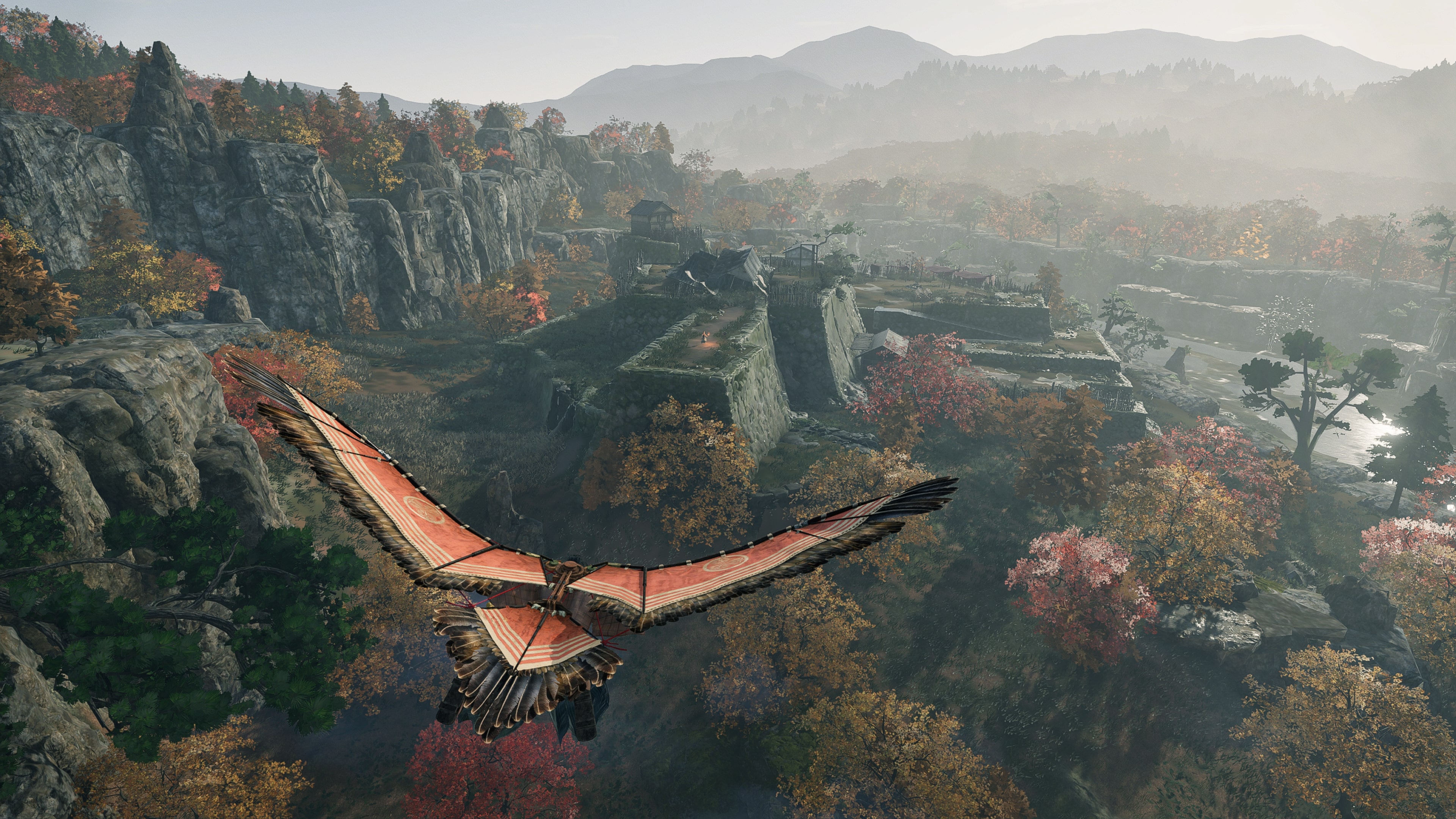Rise of the Ronin sits somewhere between Assassin's Creed and Nioh, but the action RPG's rhythm combat took me back to a 27-year-old PS1 classic
Preview | Team Ninja's latest PS5 exclusive is the studio's most ambitious yet – can it pull off everything it hopes to achieve?

Rise of the Ronin is Team Ninja's indirect follow-up to the studio's esteemed ARPGs Nioh (2017) and Nioh 2 (2020). It's the next significant PS5 exclusive of 2024, and it's set in the "Bakumatsu" period, the final years of the Edo era, during which an undercurrent of political discord between east and west sets the scene. Work on Rise of the Ronin, so says Team Ninja, began before the first Nioh – and while there are distinct similarities between the developer's past and present, this latest adventure is definitely more sophisticated and, by extension, more ambitious.
In turn, some of the rough-around-the-edges charm that made Nioh and its sequel so endearing has been lost in my eyes – Rise of the Ronin regularly boasts Assassin's Creed levels of narrative-inspired, icon-heavy hand-holding – but, from the two or so hours of hands-on time I've had so far, the game's broader scope facilitates a richer story that's underpinned by some wonderfully brutal combat. To the latter end, the Nioh series is a clear inspiration here, as is Dark Souls, Bloodborne, Elden Ring, and the studio's own Wo-Long Fallen Dynasty of last year. But Rise of the Ronin's firm but fair, rhythm-driven fighting takes me right back to one of the most challenging learn-by-doing, sword-swinging combat models of all time: 1997's PS1-exclusive, Bushido Blade.
Kick, punch, chop


Samurai RPG Rise of the Ronin is the "biggest game to date" from the studio behind Nioh
Rise of the Ronin has health bars, granted – an otherwise ubiquitous feature in fighting games that was conspicuously absent from Bushido Blade – but its combat can be just as punishing. Timing is everything in Rise of the Ronin, whereby every parry, every sidestep, every advance and every quick-witted retreat can, and often does, determine the bloody outcome of battles. The game's character customization suite extends to fighting styles, while genre-familiar stats and ability upgrades let you tweak and refine your template as you progress. But these nips and tucks can only take you so far. In the heat of the moment, you need fast reactions, cat-like reflexes and breakneck hand-to-eye coordination as you dance around your opponents and devastate anything that dares to cross your path.
My character started out versed in 'Mumyo-ryu', for example, a combat style with "highly versatile" techniques such as 'Benthen Whirl' (R1 and square), 'Hell's Cross' (R1 and X), and 'Twin Dragons' (R1 and circle), each of which is as deadly in practice as it sounds. By flitting between Charge Attacks and Advancing Attacks with my dual blades raised, I was able to keep most low-level bandits at bay; whereas my high-energy parry move, Counterspark, was the jewel in my fighting crown. Where parrying in games like Dark Souls and Elden Ring is largely optional, getting through even the first 120 minutes of Rise of the Ronin without Counterspark, I reckon, would be nearly impossible – and it's this unrelenting deference to fighting rhythm and technique that echoes Sony's old school, yet totally ahead of its time, PS1 classic.
I won't spoil the minutiae of Rise of the Ronin's story beats here, but the overarching narrative unfolds in Japan in 1863. The Black Ships of the West have breached home shores in a bid to reestablish bygone trade routes, and uncertainty has swept the mainland and its natives. The aforementioned Bakumatsu period marks the end of the tyrannical Shogunate era, and that's where you, a warrior ronin inspired by revolution, enter the fray. Set in the real-world-inspired Yokohama as it existed at the time, Rise of the Ronin's open-world map guides you through backwater burghs, sprawling cityscapes, pastoral landscapes and bustling metropolitan districts – from the Elephant's Nose port to the Miyozaki Pleasure District, Yokohama Chinatown, the red brick buildings of downtown Yokohama, and much more.

Like any action role-player worth its salt, visiting these locations will allow you to converse with scores of civilians, each of who has a story to tell, some of who can help aid you in your quest. One of Rise of the Ronin's defining features to this end is Human Bonds, whereby deepening your relationships with NPCs can bring you valuable items and teach you new combat styles. One early acquaintance met on the road is one Ryoma Sakamoto, a charming nomad who is a master of the Hokushin-Itto-ryu school of swordplay, and a sharpshooter of the highest order. Once you've buddied up with Ryoma, an early perk in your friendship is the 'Trigger of the Dawn', which allows you to increase the number of bullets that can be loaded into revolvers, while also adding fire damage to handgun attacks. Moving deeper into the game's story will improve your bonds with key NPCs, while gift-giving can help expedite the process.
My favorite thing about this in motion is how Rise of the Ronin lets you switch simultaneously between characters in combat. Even by the time you meet Ryoma, you'll be pretty well-versed in your ronin's skillset, and so the option of getting to grips with another character's moveset is great for both exploring other disciplines and learning what complements your own.
Weekly digests, tales from the communities you love, and more
Locale Bonds, on the other hand, extend the same principles to actual areas, whereby ridding towns of nefarious visitors curries favor with the folk living there. Strengthening bonds with towns and cities can give insights into the location of treasure chests, Veiled Edge Banner save points, and fugitive contracts among other things, with Completion Rewards given in exchange for scavenged collectibles, resulting in so-called regional items being periodically sent to safe house-style 'Longhouse' in each area.
On the up

"Again, this wider scope feels a little at odds with what we've come to expect from Team Ninja – Nioh, like its Souls series inspiration, adopted a light-touch approach to its narrative – but that is, of course, no bad thing"
Through all of this, Rise of the Ronin strives to weave humanity throughout its open-world sandbox, whereby your actions can have a direct impact on its inner workings, no matter how small or large. Again, this wider scope feels a little at odds with what we've come to expect from Team Ninja – Nioh, like its Souls series inspiration, adopted a light-touch approach to its narrative – but that is, of course, no bad thing. What it is is different. What it is is, indeed, the developer's most ambitious project yet, certainly since the company's restructuring 10 years ago. But what strikes at the heart of Rise of the Ronin is its combat – just like Nioh, Nioh 2 and Wo-Long Fallen Dynasty; just like Team Ninja-of-old's Ninja Gaiden and Dead or Alive; and just like every ARPG and Soulslike the studio has drawn inspiration from, Rise of the Ronin's deft combat mechanics are its piece de resistance.
How it manages to balance so many moving parts with such an involved fighting system without exhausting players longer term remains to be seen. But Rise of the Ronin certainly has the tools, and the talent, to make it work. We'll find out either way when Team Ninja's latest action RPG and PS5-exclusive lands on March 22.
Here are 10 games like Dark Souls that will test your survivability

Joe Donnelly is a sports editor from Glasgow and former features editor at GamesRadar+. A mental health advocate, Joe has written about video games and mental health for The Guardian, New Statesman, VICE, PC Gamer and many more, and believes the interactive nature of video games makes them uniquely placed to educate and inform. His book Checkpoint considers the complex intersections of video games and mental health, and was shortlisted for Scotland's National Book of the Year for non-fiction in 2021. As familiar with the streets of Los Santos as he is the west of Scotland, Joe can often be found living his best and worst lives in GTA Online and its PC role-playing scene.


